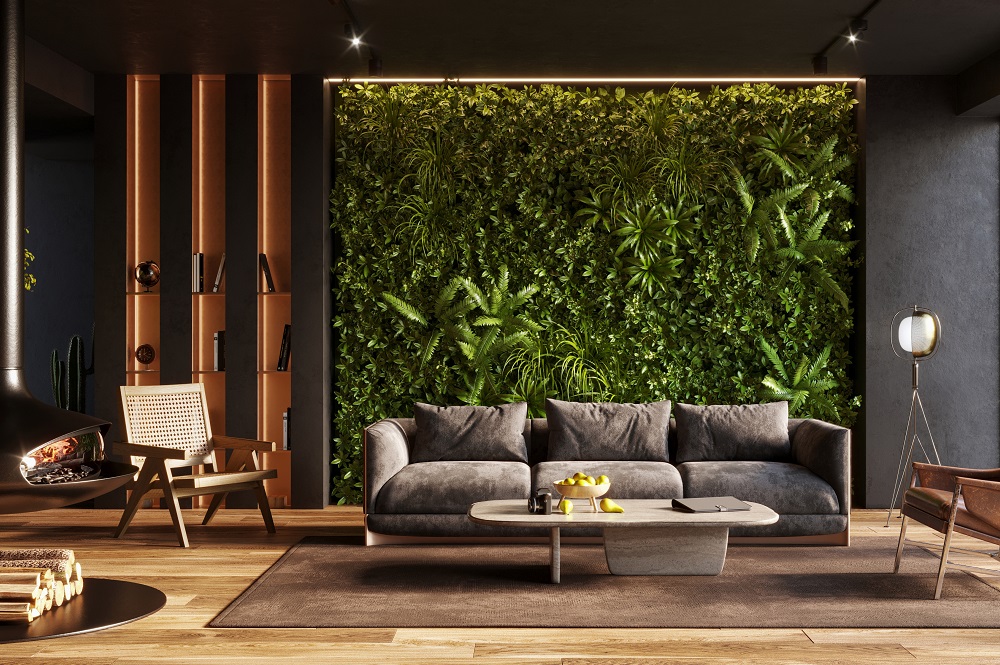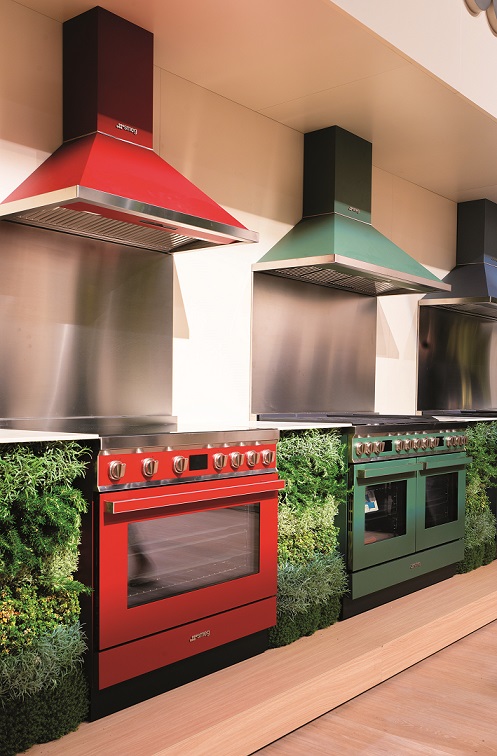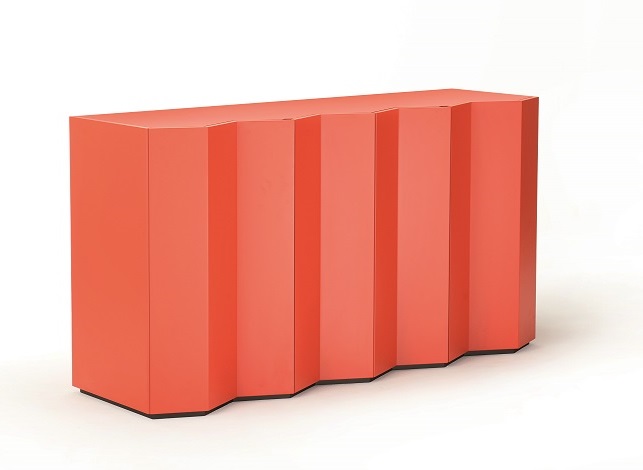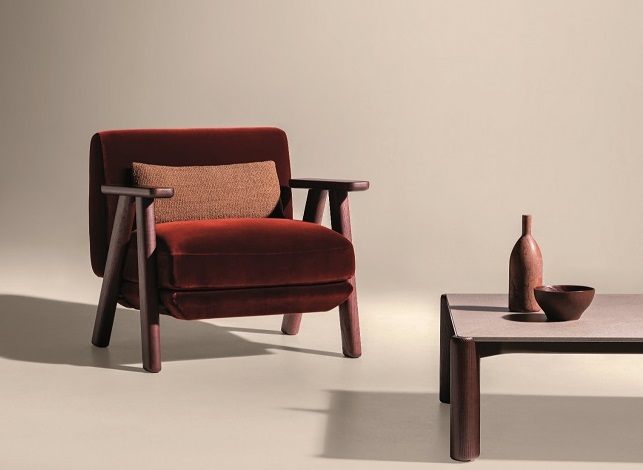The world of design could be seen as a giant planet orbited by all the industrial sectors that adapt to its needs, follow its trends, and draw inspiration from them. That is because it is characterised by a strong ability to establish and emphasise trends that then gradually touch many branches of the economy, as in a chain reaction. And since every planet needs its own universe, the ipcm® team set out to explore it. The Salone Internazionale del Mobile trade fair fascinated us and made us deeply aware of the leading role that design plays in driving the aesthetic trends of entire sections of the market.
Every year, Milan Design Week attracts numerous visitors eager to discover the latest trends in the world of design and furniture. Aware of the importance of this event, the ipcm®_International Paint&Coating Magazine team immersed themselves in the hectic atmosphere of Salone Internazionale del Mobile and explored the installations and exhibitions of Fuorisalone, aiming to identify the most relevant and interesting trends. Through meetings with designers, companies, and experts, we outlined an overview of the direction contemporary design is taking. In this article, we will summarise the key trends that are inevitably going to affect companies along the entire production chain, from raw materials to manufacturing, up to our sector of interest, that of finishing.
Interior design and construction: sustainability as a common thread
Interest in sustainable materials and processes is growing steadily, both for interiors and for buildings and large architectural projects. Designers and architects are increasingly incorporating recycled, biodegradable, and environmentally friendly materials into their projects. Green building, the branch of architecture that deals with designing and constructing structures limiting environmental damage, mainly uses natural materials such as wood, stone, and clay. These projects promote energy efficiency and human well-being through effective thermal insulation, optimised building orientation to make the most of passive solar energy, and renewable energy technologies such as solar panels and rainwater harvesting systems. A key aspect of this is biodesign, which integrates natural elements into buildings to improve sustainability and indoor air quality, promoting the health and well-being of people. Projects designed with this in mind include vertical gardens, green roofs, phyto-purification devices for waste water, and natural ventilation systems.
 Vertical gardens are increasingly in demand in the context of biodesign, which integrates natural elements into buildings to improve sustainability and indoor air quality, promoting the health and well-being of people. © AdobeStock
Vertical gardens are increasingly in demand in the context of biodesign, which integrates natural elements into buildings to improve sustainability and indoor air quality, promoting the health and well-being of people. © AdobeStockDiscreetly integrated technology
At Salone Internazionale del Mobile 2024, a dominant trend that caught visitors’ attention was the increasingly sophisticated integration of technology into interior design. Innovation embraces practicality and aesthetics through home automation, augmented reality, and 3D printing coming together to create cutting-edge living experiences. Technology is no longer just an additional feature but an integral part of the living experience, making homes smarter and more functional. At the same time, a subtle revolution is taking place: technology is incorporated more discreetly, gently blending in with its surroundings. Electronic devices and home automation solutions are no longer isolated objects but smoothly integrated into the design of homes, preserving the elegance and harmony of spaces. This approach reflects the growing interest towards timeless aesthetics, where technology is at the service of comfort and functionality.
Rediscovering nature
This trend is a tangible response to the growing desire to reconnect with nature, even within domestic spaces. Organic shapes and materials evoking natural elements have taken centre stage in the design scene, focusing on the harmonious fusion of built and natural environments. Materials such as wood, stone, terrazzo, and rattan featured prominently in the displayed creations, conveying a feeling of calm and authenticity. The choice of natural materials went hand in hand with the integration of tactile textures, which not only add comfort to the spaces but also help stimulate the senses and enrich the overall aesthetic experience. At the same time, the dominant colour palette included earthy and natural tones, with variations of green, terracotta, and ochre pervading the exhibition spaces and reflecting the human desire to reconnect with nature and create cosy and reassuring atmospheres, thus promoting relaxation and contemplation. Indeed, nature-inspired design represents a major evolution in furniture and architecture, providing reflective spaces where individuals can escape from the hustle and bustle of modern life and find balance and well-being. As evidence of this trend, most of the Salone Internazionale del Mobile stands paid homage to nature by including walls characterised by vertical greenery, impressive plants, and natural stone.
 At the Salone del Mobile, Smeg wanted, through its stand, to pay homage to by including vertical green walls and plants. ©Paolo Riolzi / Salone del Mobile.Milano
At the Salone del Mobile, Smeg wanted, through its stand, to pay homage to by including vertical green walls and plants. ©Paolo Riolzi / Salone del Mobile.MilanoDynamic design: versatility and adaptability for an evolving world
This edition of Salone Internazionale del Mobile saw the emergence of multi-functional design for both living spaces and objects. This trend reflects the growing awareness of the world’s rapidly evolving needs. Home environments and furniture are no longer conceived as static but rather dynamic and flexible, to adapt to everyday life’s different activities and situations. Multi-functional design solutions ensure versatility and practicality because they maximise the available spaces and meet a broader range of needs without compromising on style or aesthetics. This philosophy is reflected in furniture that can be transformed to perform different functions, such as sofa beds or extendable tables, and in living spaces that can be reorganised to serve various purposes, such as turning a living room into a meeting room or a remote workspace. As well as optimising the use of space, multi-functionality promotes a more sustainable lifestyle by reducing the need to own a wide range of objects and facilitating the transition to a more minimalist and conscious lifestyle. It ultimately entails an important evolution in interior design, which responds to the changing needs and challenges of modern life with creative solutions.
Bold colour accents: the triumph of coral orange and burgundy
Despite neutral colours being widespread on walls and the main furniture elements, another key trend emerged during Milan Design Week 2024: the use of bold and vibrant hues to infuse interiors with liveliness and personality. Coral orange and burgundy especially stood out as the event’s big stars. Coral orange, a colour often considered difficult to match with others, has been enthusiastically embraced by major Italian brands such as Zanotta, Cassina, Poltrona Frau, and Magis. Sunny and cheerful, it warmed the mood and added a touch of freshness to the exhibition spaces. Two glaring examples of this were the Z24 cabinet by Muller van Severen for Zanotta and the re-editions in a coral version of Magis’ Puppy chair and Bombo stool by Cini Boeri, a tribute conceived by Loro Piana in the company’s showroom. The presence of coral orange suggests that this colour may soon find its way into our homes, bringing a sense of warmth and joy capable of transforming the surrounding atmosphere.
Burgundy, on the other hand, was used in curtain fabrics and on painted walls, creating enveloping environments full of personality. With its timeless elegance, this deep and refined colour was chosen by several leading brands to lend a sense of welcome and sophistication to spaces. Perfect for those longing for luxurious atmospheres, burgundy manages to combine modernity and tradition. Brands such as Minotti, Gallotti&Radice, LAGO, and Baxter have embraced this shade for their 2024 collections. And, whereas at the trade fair it was mixed with other colours such as orange and green, it was virtually unrivalled at Fuorisalone. Sabato De Sarno, Gucci’s creative director, celebrated the darkest red by calling his selection Rosso Ancora (literally, “red again”) and relaunching five Italian design icons in their burgundy versions, confirming it as the label’s new signature colour.
 The Z24 container designed by Muller van Severen for Zanotta stands out with its vibrant hue and bold design. © Zanotta
The Z24 container designed by Muller van Severen for Zanotta stands out with its vibrant hue and bold design. © Zanotta The Altana armchair designed by LAGO in collaboration with the designer Monica Armani presented at the Salone del Mobile 2024. © LAGO
The Altana armchair designed by LAGO in collaboration with the designer Monica Armani presented at the Salone del Mobile 2024. © LAGODesign for human well-being
At Salone Internazionale del Mobile 2024, practical well-being took centre stage in living spaces, reflecting the growing interest in creating environments that promote physical and mental health. This trend translates into carefully conceived design to promote well-being with a focus on natural light, ventilation, and the creation of environments that induce calm and concentration. The rooms are devised to maximise natural light, using large windows and lighting systems that replicate sunlight to enhance the mood and boost energy levels. Air quality is optimised through advanced filtration systems and eco-friendly materials that ensure a healthy, pollutant-free indoor environment.
The production process revolution: the importance of quality, from raw materials to end products
Another significant trend concerns the increasing importance placed on the production process from start to finish, with a focus on the quality of raw materials and processing phases. This approach calls for developing optimised and controlled manufacturing processes that meet high quality, functionality, and aesthetic standards in finished products. The awareness that the beauty and functionality of objects depend directly on the quality of the raw materials used and the processing methods employed is increasingly widespread. That translates into an increased focus on research, the selection of the best raw materials available on the market, and the implementation of advanced and sustainable manufacturing processes – in other words, a commitment to creating high-quality products that not only meet the users’ aesthetic and functional needs but also promote sustainability and the well-being of the environment and people.
How is the finishing sector responding?
As mentioned in the introduction to this article, the design world sets trends and influences many other branches of the economy and industry in a chain reaction. The finishing sector is affected by these trends, too. Sustainability, the focus of this year’s Milan Design Week, is certainly not a new theme for the finishing industry. However, with its emphasis on the environment, this event seems to have been a further push towards responsible practices.
In recent years, ipcm® has presented several articles in its magazines on the development of more sustainable paint products, such as water-based coatings, which are becoming increasingly popular as they emit less VOCs thus reducing their impact. In addition, companies in the sector are working to minimise waste and paint consumption during the finishing phases by optimising production processes and adopting more sustainable packaging solutions. Technologies that reduce energy consumption in paint production are becoming increasingly popular, using more efficient equipment and energy management practices. Finally, companies are developing solutions for recycling used paint and improving disposal practices. Certifications and regulations such as REACH set standards for the safety of chemicals and promote the responsible use of chemicals. In other words, sustainability in the coating industry requires a holistic approach to the entire life cycle of products, aiming to reduce environmental impact and promote greater social responsibility.
At the same time, as mentioned, the trends identified at Salone Internazionale del Mobile 2024 strongly influence this sector, driving its colour and finish choices. Vibrant hues such as coral orange, which dominated the show, and tints that evoke a greater connection with nature, in particular, are inspiring the selection of bolder colours for both indoor and outdoor use.